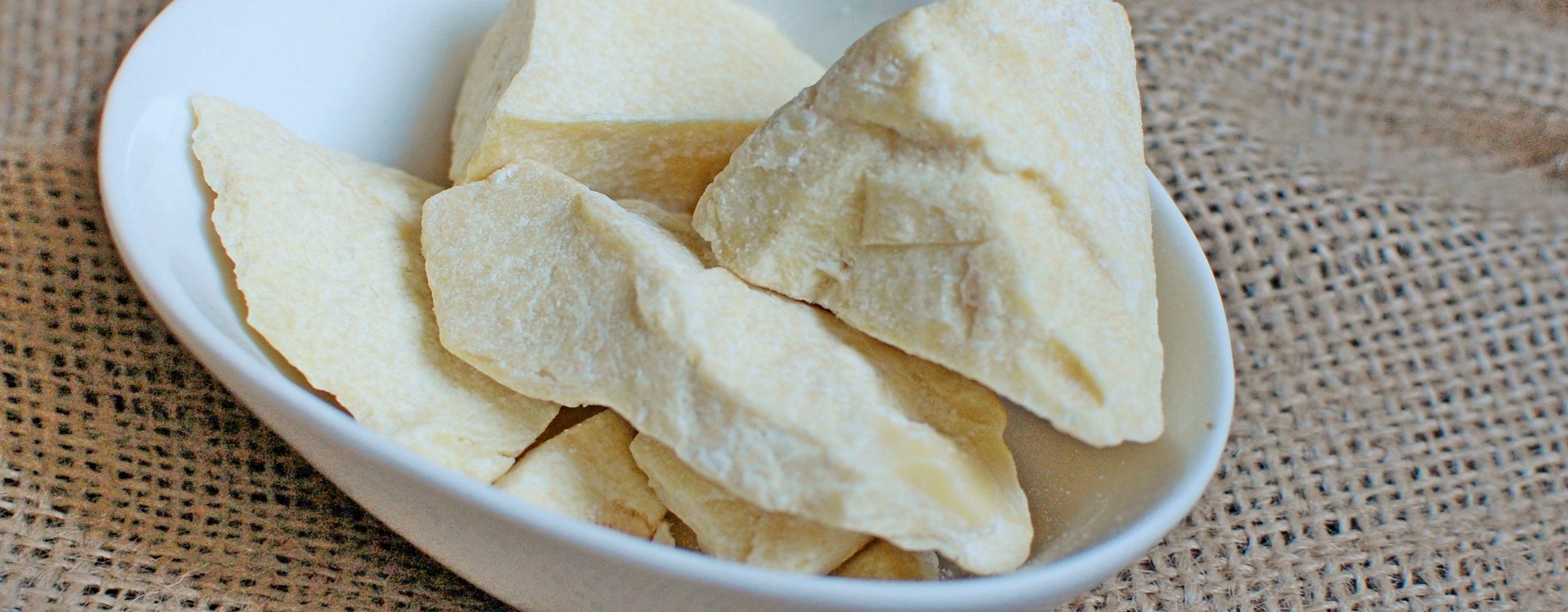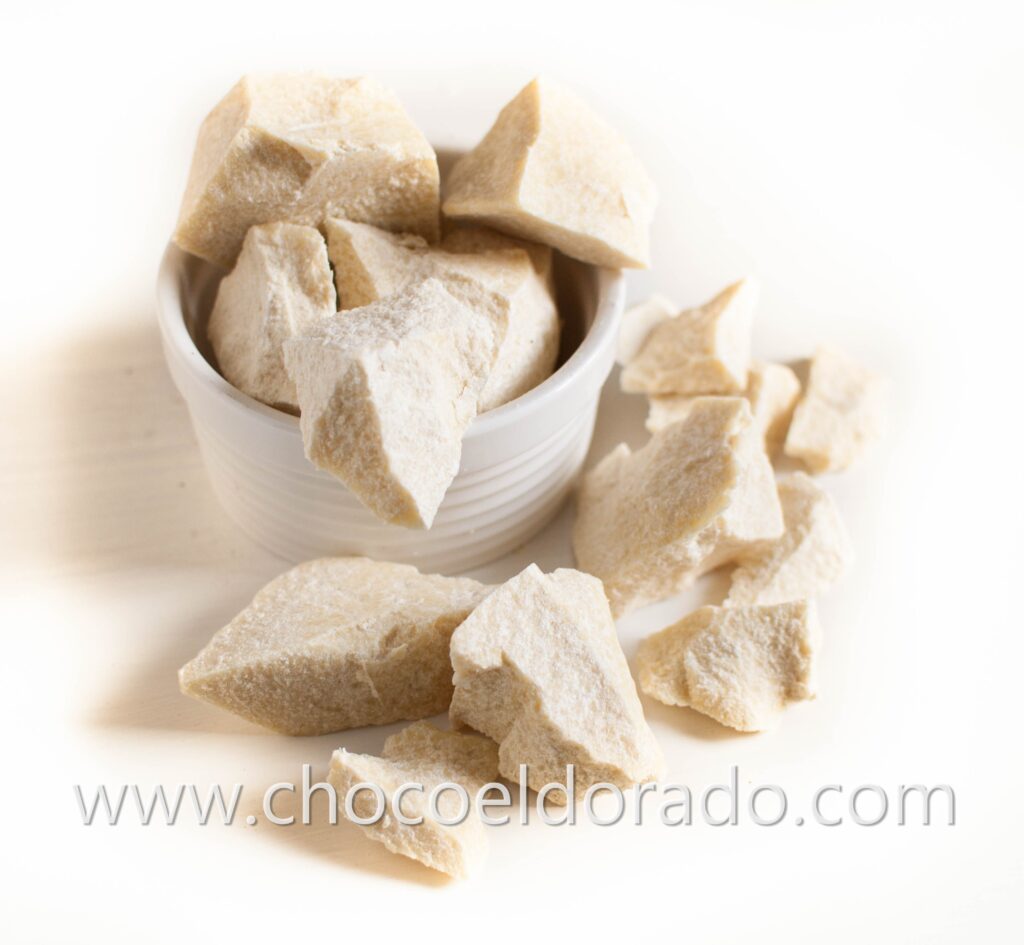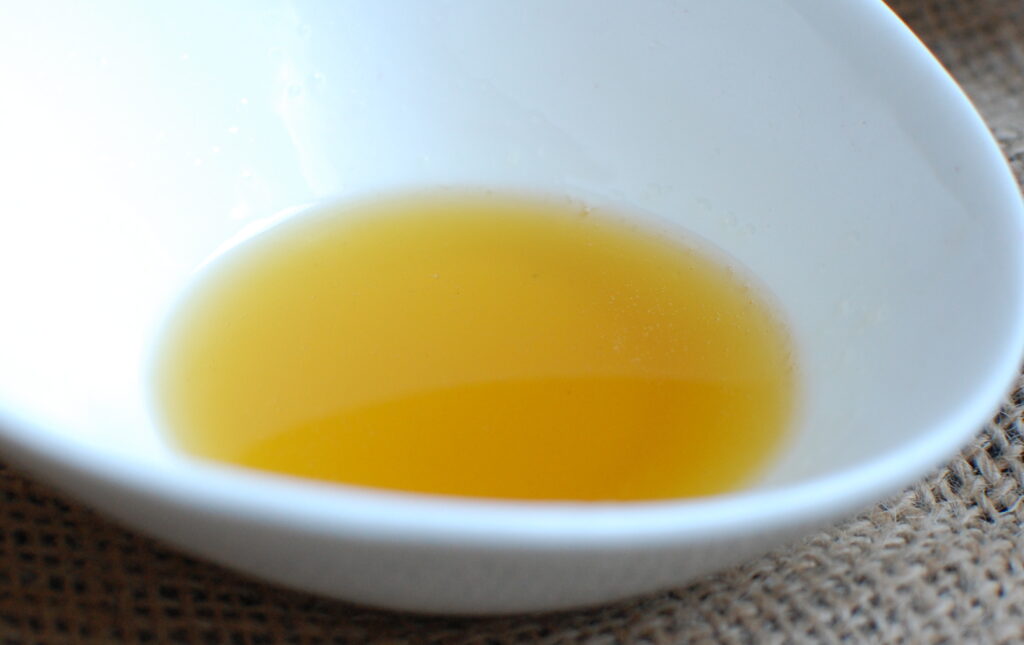
What is cocoa butter
Cocoa butter is a natural oil, which is present in every cocoa seed, which means that also in every cocoa bean. More about seeds and beans in this article.
Cocoa butter is a side product of cocoa powder production. As hot cocoa mass is pressed, cocoa butter flows out and what remains is the cocoa solids, which are then ground into a cocoa powder. Cocoa butter is not pressed entirely out of cocoa beans and that is why cocoa powder has usually around 11% cocoa butter remaining. So cocoa powder is more suitable for those who want to loose weight compared to chocolate, where the percentage is much higher.
So you might ask: why at the picture the cocoa butter looks solid? It is because cocoa butter solidifies at around 93-101°F/34-38°C and this picture was taken at a room temperature, when cocoa butter is in a solid state.

Use of cocoa butter
Cocoa butter is one of the highest-quality oils in nature. It does not contain cholesterol. It has high hydrating capability and that is why it is used widely in the cosmetics industry. You may probably know various creams based on cocoa butter. They are supposed to give your skin hydration and smoothness. Nevertheless, you may directly use raw cocoa butter instead and it will come cheaper and more efficient!
And of course, it is used during chocolate production. But wait, why is that? If it is part of a cocoa bean, it is already present during production, isn’t it? That is right, but even though the amount of cocoa butter in a cocoa bean is around 50%, it is not enough for the chocolate to be smooth and glossy as we know it. That is why during production it is necessary to add extra amount of cocoa butter into the process. Also when you look at the content at the packaging of a quality chocolate bar, it will list cocoa butter separately.

Chocolate tempering
Chocolate butter is responsible for the texture of chocolate. As said above, without this butter the chocolate wouldn’t be so glossy and crispy. But to obtain these characteristics, the chocolate needs to be tempered. This means a process of bringing the chocolate into temperatures where the butter gets in the right molecule structure. These temperatures differ for dark, milk and white chocolates. It is usually like this:
Dark chocolate melts at around 50°C (122°F) and is then tempered around 31°C (88°F)
Milk chocolate melts at around 47°C (117°F) and is then tempered around 30°C (86°F)
White chocolate melts at around 45°C (113°F) and is then tempered around 29°C (84°F)
During the production, the chocolate is already melted and in liquid state, so it needs to be brought down to the tempering temperature and then again slightly higher for around 3°C. Then it is let to cool down in a fridge.
You can experiment with this at home. Melt down a bar of chocolate and let it solidify. You will see that the structure changed. That is because it was not tempered during cooling down. And then melt it again and let it cool down to tempering temperature, raise again 3°C and then let cool down completely. It will be back in a good shape.
Just don’t burn the chocolate during melting! You can use microwave oven, but check regularly with a termometer, stir it and don’t let it go much above 50°C.
Or do it on purpose, at least you will see what burnt chocolate means! You will know you burnt it when the chocolate smokes and smells bad.
Happy experimenting!